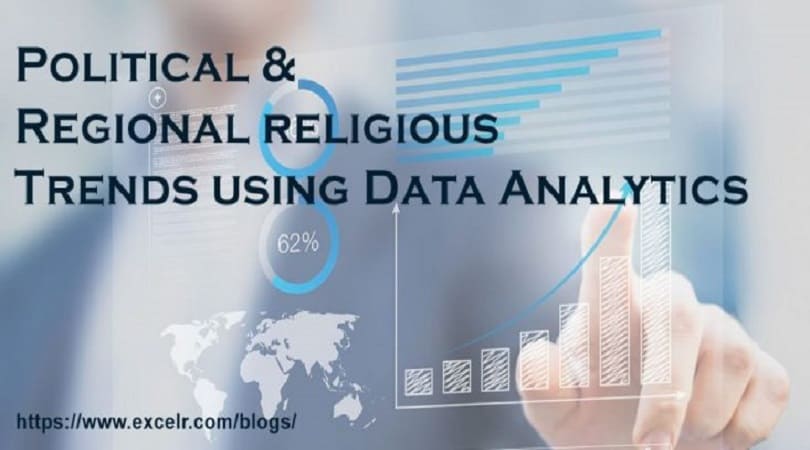Political Regional religious Trends Using Data Analytics
Big data has become a powerful tool for the modern political candidate. Complex models allow campaigns to gain a much more refined understanding of constituents at the individual voter or household level, whereas prior campaigns were typically limited to the general demographics of the state, county or zip code.
Micro-targeting of voters through the use of data analytics gained momentum in the 2018 election cycle. In the campaigns, candidates are outsized advantages over opponents, both in the quality of data analytics and predictive modeling.
A new frontier of campaign analytics was born. Reflecting on the use of real-time metrics, by leveraging big data, candidates can effectively segment the voter population across a variety of metrics, including basic demographics (such as income and gender), lifestyle data and historical tendency to vote for a certain party. Candidates can also mine data from social media and other websites to measure individual voter interests, associations, and affiliations. Once candidates have gained a clearer picture of their voters’ identities, they can then adapt their communication strategy accordingly with the goal of more effectively reaching their target (and most receptive) audience.
Rather than pursue mass mailings or call campaigns, candidates can focus their efforts on voters that could make the biggest impact on Election Day. Strong supporters can be identified early on and enlisted as local influencers or canvassers in the field, and potential swing voters can be prioritized in outreach campaigns—the goal to micro-target each individual voter, in mass scale, across the entire nation.
Understanding a campaign’s voter base can also influence the medium that candidates use to communicate their message. For example, television ads are a common marketing tactic, but research has shown that one-third of voters do not watch live TV each week, while 52% of voters watch online videos on a weekly basis. By using big data to understand the behaviors and preferences of target voters, candidates can deliver content on the platforms that voters are most likely to use, thereby more efficiently using campaign resources and also potentially bringing down per voter acquisition costs.
Big data can help candidates determine the delivery strategy for their communications, and also shape the content of the communications themselves. Candidates can address the same issue in different ways to appeal to different audiences depending on their preferences and beliefs. Candidates may also deliver personalized content through voter-targeted digital advertising services. These services use voter registration data to identify individuals by voting history or party affiliation and then serve them customized ad content that addresses specific political issues or positions that are of interest to the voter. The ability to use data to define voter specific messaging, and then determine how best to deliver the messaging, creates a partnership that is difficult to beat.
From analyzing social media and demographic information to targeting and motivating voters, big data has become a powerful force in the election process in India and increasingly in other countries as well. And while the tools and methods candidates use will continue to evolve, the large-scale interpretation and analysis of data are likely to be a centerpiece of most future political campaigns.










